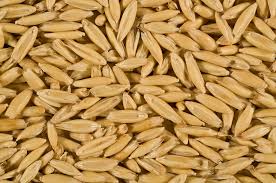Q: I am in search of a healthier breakfast alternative for my kids than sugary cereal (one they will actually eat), any suggestions?
A: Oats are purchased more often in January than any other time of year. Oats (Avena sativa) have a sweet flavor that makes them a favorite for breakfast cereals, making them the number one breakfast food and number three on the satiety index measuring fullness and satisfaction. Unique among the most widely-eaten grains, oats almost never have their bran and germ removed in processing. So if you see oats or oat flour on the label, relax: you’re virtually guaranteed to be getting whole grain.
In the U.S., most oats are steamed and flattened to produce rolled oats, sold as “old-fashioned” or regular oats, quick oats and instant oats. The more they are steamed and flattened, the faster they cook (e.g. quick oats) and the softer they become. Steel-cut oats are chewier and nuttier. When cooked, they are called porridge.
Oats helps lower LDL cholesterol and can help lower blood pressure. The soluble fiber helps control blood sugar to reduce type-2 diabetes. Containing more than twenty unique polyphenols called avenanthramides, oats have strong antioxidant, anti-inflammatory and anti-itching activity.
